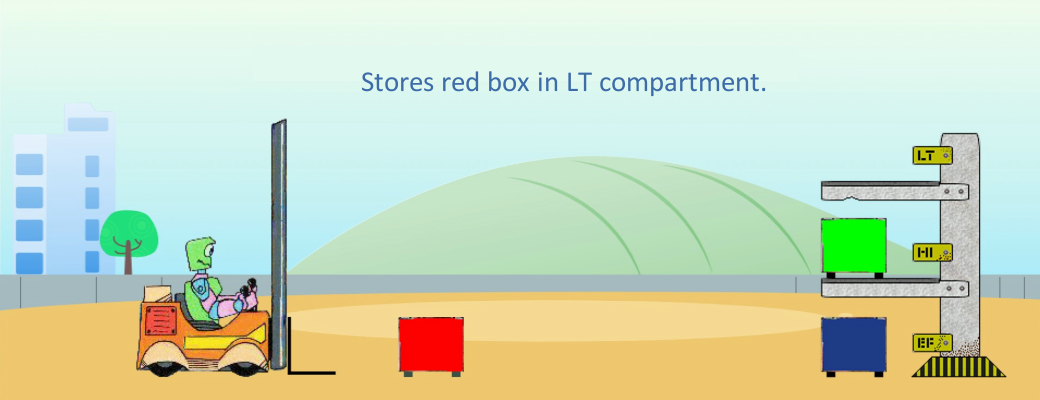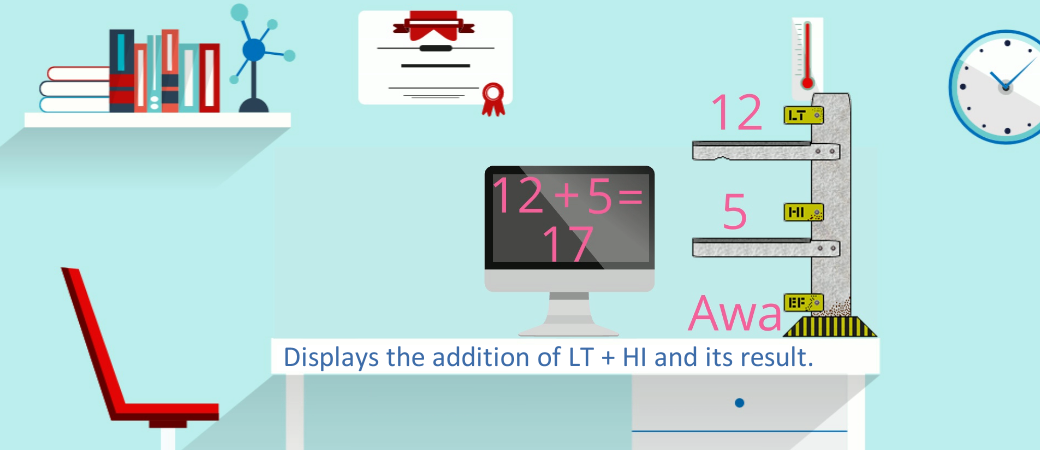Want to learn computer coding in record time?
You've come to the right place!
We are convinced that, pedagogically, our method is much better than Scratch®.
The CAR method considers that Computers Are Robots.
In a warehouse, the robot will receive boxes or crates, sort them, store them and output the types and numbers of boxes or crates required.
A computer will do the same things, except that the boxes will be numbers or strings of characters.

The robot manipulates crates, it can store them, retrieve them...

The computer manipulates data, numbers and strings, it can store them, retrieve them...
The algorithmic bases of robots and computers are the same.
The learning process will be based on this concept and will be structured around the following 4 stages.
Stage 1: AlgorithmicsBy programming small virtual robots, you will learn to manipulate conditional instructions, Boolean expressions and repetitive instructions. The aim is, of course, for the robot to perform its task correctly.
But the essential objective will be to integrate the way in which this automaton manages the execution of its procedure or programme.
We spoke earlier about storing boxes or crates. Variables are the elements in which computers store numbers or character strings. We will see how to manage these variables correctly.
Stage 3: pseudo-codeThe first 2 skills will enable you to start creating small programmes as if you were controlling a real computer, but this coding will be done in "natural language", in English.
The interface used will allow you to visualise everything that is happening in the computer as it executes its programme. This will allow you to form 'mental images' of how the computer works, which will be very useful when you move on to more complex programmes.
Stage 4: computer languageMastering the first 3 stages will enable you to tackle the final stage, learning a real computer language. This stage will undoubtedly be the easiest: all you have to do is learn the language's syntax rules and adapt your pseudo-code to this syntax.
We have chosen to introduce you to the Python language because it is currently the most widely used, particularly in robotics and artificial intelligence.
Why in the right place?History of the CAR method
The proposed method was first developed under the name "Images pour programmer" (Images for programming) by Professor Charles Duchâteau of CeFIS (Centre pour la Formation à l'Informatique dans le Secondaire - Center for Computer Training in Secondary Schools) at the University of Namur in Belgium. This visionary revolutionised the approach to a computer programming or coding pedagogy that he has taught to hundreds of young people and adults... including me...
I myself have taught this method to hundreds of young people in Belgian secondary schools since 1985.
Specific features of the CAR method
In 1995, I added interactive virtual robotics modules in the form of Scratch®-style block programming, which appeared in 2004. These modules are designed to facilitate the development of the right mental coding schemes by confronting the learner's imagination with the reality of the robot performing the task.
The method has also been expanded to include a chapter of interactive pseudo-code designed to "open up the abstract black box" that is the computer. The step-by-step execution of the programmes enables you to see and understand how the computer works, and so to get 'under its skin' to be able to code more easily later on.
---As a result, you've come to the right place because, with this method, you benefit from the accumulated knowledge of two pedagogues who have taught almost 2,000 people in their careers and have used this experience to constantly improve their practices.
Why in record time?The latest coding courses given summers 2021, 2022, 2023... to young people aged between 14 and 19 show that it is possible to learn all the concepts of coding and the basics of the Python language in just one week. After around twenty four hours of guided lessons, the motivated young people had become self-sufficient and could embark on personal projects with the help of the documentation provided on this website and information found on the Net.
Without being pretentious, the CAR method is probably the quickest and most concise method yet encountered for mastering the basics of coding and Python.
Incredulous?
Well, take up the challenge!!!
If you are a coder, teacher,... supervise a learner, a small group or a class with the help of the new version of the "Pedagogical Support Manual" soon to be available on this site.
If you're an absolute beginner, start this course straight away. Try to find a friend to take the journey together, as it's a bit more difficult without help... but it's perfectly feasible. You can also use the "Teaching Support Manual" available soon.
Have a great experience!!!I wish you every success in your ultra-fast training in coding and the basics of Python... and, above all, let us know about your experience, we're very interested.
Rupert